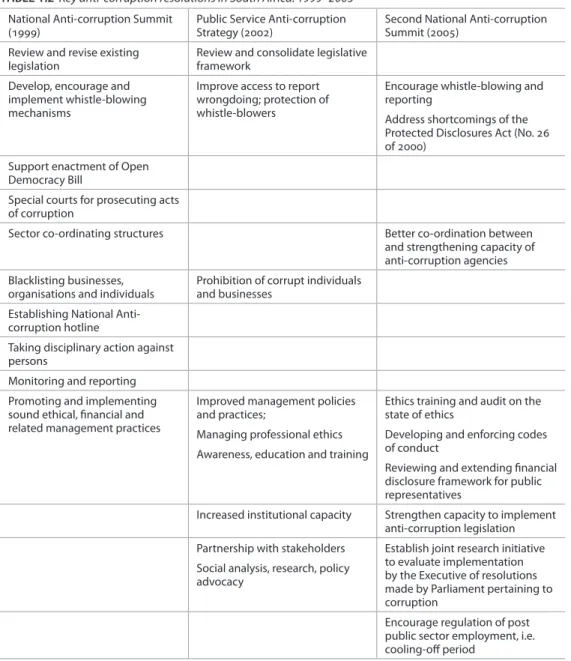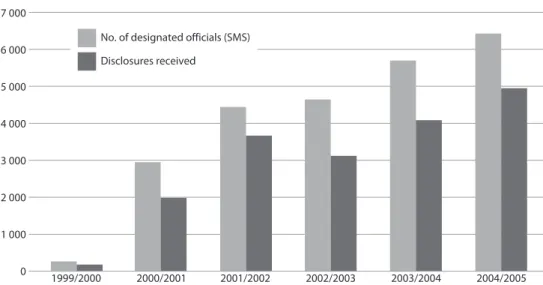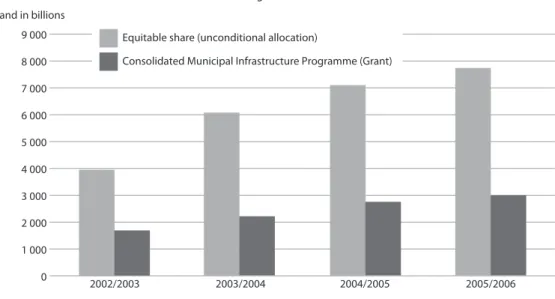The papers presented in this volume were based on research studies produced by the Democracy and Governance (D&G) Program of the Human Sciences Research Council (HSRC) for a larger project examining fifteen years of governance and administration in South Africa. CDWP Community Development Workers Program CONTRALESA Congress of Traditional Leaders of South Africa D&G Democracy and Governance.
Reviewing South AfRicA’S effoRtS to combAt coRRuption in itS
Introduction
The National Anti-Corruption Summit in 1999 represented perhaps the most comprehensive benchmark for assessing the implementation of future anti-corruption measures. The inaugural national summit on the fight against corruption was followed by a second summit in 2005, which also concluded with a set of resolutions.

A preliminary assessment of resolutions taken to combat corruption in the South African public service
Problems confronting the effectiveness of anti-corruption measures in the South African public service
Anti-corruption and reporting/disclosure
First, given the sensitivity surrounding disclosure, it could be argued that the PDA has simply not been effectively communicated to officials in a manner consistent with the goal of fostering a more conducive reporting environment. Regulation C.4.10: “in the exercise of her or his official duties, [an official] shall report to the competent authorities fraud, corruption, nepotism, maladministration and any other act which constitutes a crime or is prejudicial to the public interest.” This is stated in regulation B.3, which states: “The primary purpose of the Code is positive, viz.
Anti-corruption and functional capacity
In fact, this very early excerpt explaining the government's anti-corruption offensive calls for a redefinition of departmental finance management functions to more actively prosecute acts of corruption. The scope of the audit committees means reporting in a broad sense on the effectiveness of the internal controls, the quality of the financial management reporting and the evaluation of the financial statements.
Anti-corruption and public service regulations
In its research into the matter, the SDK also uncovered a possible error in the disclosure reporting template, which could have contributed to insufficient information being provided about public officials' financial interests. However, in continuing its investigation, the SDK noted that the financial disclosure form currently did not provide for the job description/content of the official, which made comparison difficult and had an appropriate effect on its ability to identify potential conflicts of interest . The number of 'potential' conflicts of interest estimated is perhaps of secondary importance in this example to the limitations evident in estimating the risk of and susceptibility to conflicts of interest in the public service.
Anti-corruption monitoring and enforcement
SAPS Anti-Corruption Unit (no longer exists . in its original form) Investigate cases of alleged corruption by members of the Police services. Others have also pointed to operational difficulties in the work of South Africa's various anti-corruption agencies. The PSC (2001b: 80) observed that "There is an overlap between the functions (particularly in relation to investigations) of several existing anti-corruption agencies...".
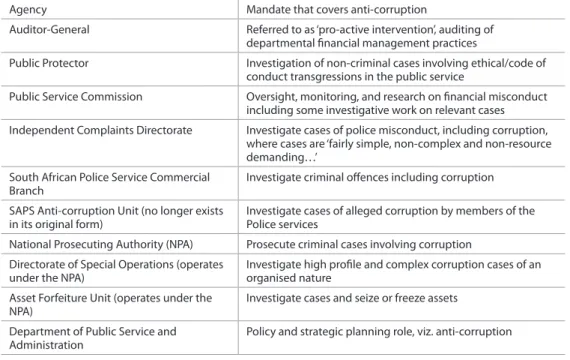
Conclusion
That said, while it is clear that this case speaks directly to the potential "dangers" that Klemenčič and Stusek noted in setting up specialized anti-corruption agencies, it is not clear whether it is possible to reconcile a drive, on the one hand, presumably to reduce "jurisdictional conflicts and territorial fights." In addition, in terms more relevant to this study, the DSO example could also be said to contribute to the potential gap between the South African state's functional ability to enforce anti-corruption compliance, taking into account the merits of a conflict of jurisdiction argument ,19 and the likelihood that compliance will improve. Given what critics have argued, this is a move that could weaken the anti-corruption capacity of the state, which already shows widespread staff shortages in several agencies tasked with carrying out anti-corruption work.20.
Recurring episodes of local protests in the run-up to the 2006 municipal elections have focused public attention on the state of local government in South Africa. This inevitably raised questions about the capacity of local government to carry out its mandate, which had already been noted in September 2005 when the Department of Provincial and Local Government (DPLG) reported that a significant number of municipalities were failing to deliver social services (Atkinson 2007). This paper attempts to answer this question by reviewing the changing conditions in local government over the past fifteen years.
Compounding the issue is the fact that municipalities are increasingly expected to lead economic development in their respective communities (www.thedplg.gov.za). It does this firstly by defining capacity in the context of municipalities; secondly by determining the existing level of skills relative to municipal needs; third, by evaluating existing programs that have been introduced to compensate for a lack of municipal capacity; and then, fourthly, where possible, by making observations about where these programs may most urgently need to be strengthened.
Apartheid inheritance: official neglect, backlogs and incapacity
Such official neglect meant that African communities experienced severe backlogs in the delivery of social services, which the imposition of municipal authorities did little to address. Political volatility in the 1980s plunged both the BLAs and the African communities further into the abyss. As a result, for most of the late 1980s, African communities were left largely unsupervised by any municipal authority.
Post-apartheid reforms, de-racialisation, democratisation and empowerment
This tool was intended to enable local authorities to identify and strategically plan infrastructure and development needs over a five-year period. They serve as the main tool for local authorities to consult with residents and define development priorities (Ovens & Kitchin 2005). The collective formulation of internally displaced persons emphasizes the participatory nature of the new local government structures after 2000.
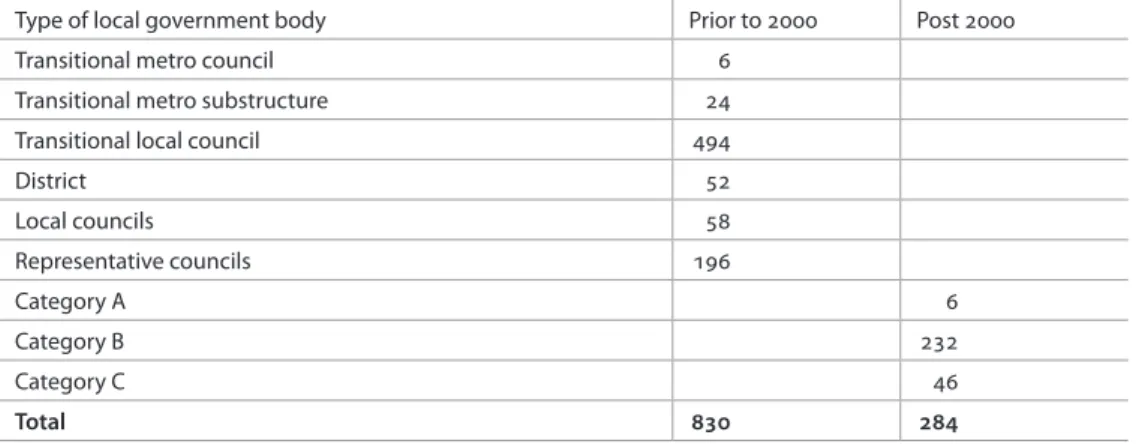
Under the IDP process, municipalities were obliged to draw up disaster management plans, spatial development plans, transport plans and waste management plans. The content of the IDPs is therefore partly informed by deliberations that take place within the ward committees. Of the 82% of municipal financial managers who had a financial qualification, 59% of them were at NQF level 4.23 an under-qualification for the job.
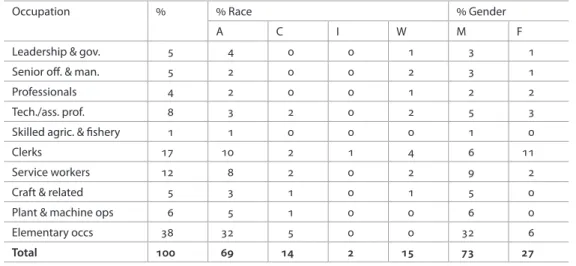
Interventions to remedy capacity problems in municipalities
Weak functionality of neighborhood committees, which are often considered peripheral and marginalized in consultative processes. DPLG notes that while 96% of neighborhood committees have been established, they are characterized by a relatively low level of functionality indicating a great need for training and capacity building in this area. Dysfunction in neighborhood committees means that, on the one hand, councilors are likely to neglect their duties because there is no immediate and public pressure to perform, and, on the other hand, residents lack an accessible official channel to reported their concerns.
Immediate recruitment of expertise
This means that South African citizens with the relevant skills, who work or live abroad, are encouraged to return home for work in the municipal sector. This initiative was intended, among other things, to recruit unemployed graduates for the municipal sector, in particular in the departments of Art and Culture, Environmental Affairs and Tourism and Public Works. 25 The National Treasury, Provincial and Local Government, Water and Forestry and the South African Local Government Association.
Councillor-voter interaction and public access to municipal services
To help community members understand, develop and submit their own integrated development plans to municipalities and other government agencies and donors. Evaluating the impact of government projects and programs on local communities and submitting reports thereof to relevant government departments. In the four years since the launch of the CDWP, 3,614 cadets have completed the one-year apprenticeship, of which 123 have dropped out.
Some observations on capacity support interventions
They serve as the first port of call for residents with concerns, and in turn inform residents of the range of government resources and provide information on how to access such resources – a function for which they have received training. To this end, CDWs are selected from and live within the communities in which they work.
Public access to municipal services: Community Development Workers’
Programme
There needs to be closer integration of CDWs in provincial departments, especially in their annual planning. Therefore, there is a need for a program to be developed to inform municipal officials and parish committee(s) (DPSA 2007: 40). In particular, councilors need to be reassured that CDWs complement their work, not compete with them.
Training programmes
Municipalities also had false expectations of SDFs, thinking they would bring in money (DPLG Project Consolidate, September 2006). There is also a high turnover of SDFs, which slows down the capacity building of interns and interns. So it is clear that a strategy needs to be worked out to keep SDFs within the municipal sector.
Importation of skills and training programmes
Local government policy in South Africa with specific reference to the Western Cape): Devolution, delegation, deconcentration or centralization. PhD thesis, University of Cape Town Cameron, R. Institutional parameters of local government restructuring in South Africa. Final Report on the Local Government Support Program for 'Improving Community Participation and Municipal Distribution Procedures in Six Rural Settlements of Koukamma Municipality'.
The democratic pragmatism argument
Some see this tampering as overkill to negate the relevance of traditional leadership in the current era. These questions have contributed to the ambivalence with which traditional leadership in South Africa has been treated. In this article, Koelble claims to articulate what he sees as two different approaches to explaining what he invariably describes as 'the resurgence of traditional leadership' in South Africa.
The organic democracy argument
Other writers from this school of analysis have explored the relationship between traditional leadership and tenure systems. Despite apartheid's abuse of power and manipulation of traditional leaders, traditional leadership as a form of government predates and co-existed with the state-based system of governance in Africa. The location of traditional leadership within communities, both physical and cultural, serves a unique purpose that people should be entitled to.
Changes in the policy context concerning traditional leaders
In addition, Article 3(1) and (2) of the TLGFA provides for the establishment of traditional councils by a 'recognised traditional community'. This will only be possible if measures are taken to ensure that rural people define the character and shape of the institution of traditional leadership at the local level, inform how it works and are accountable. The minister's comment essentially describes the government's position on traditional leaders: the necessary integration of the institution of traditional leadership into governance within the democratic dispensation, particularly in rural areas.
The perspective of traditional leaders
For example, current policies seem to indicate that the government is seriously considering an integration of traditional leadership within the South African system of government. South African intellectuals do not agree on the relevance of traditional leadership in the South African political system. Along with an urgent need to be precise about the legal existence of traditional leadership as part of governance in South African rural areas, there is also a need to specify government obligations to ensure smooth operation of the Houses of Traditional Leadership. ensure.
Are the powers of traditional leaders in South Africa compatible with women's equal rights: Three conceptual arguments. More socially embedded: The distinctive character of 'Communal Tenure' regimes in South Africa and its implications for land policy. Cape Town: RGN Press Oomen, B. Chiefs in South Africa: Law, power & culture in the post-apartheid era.
